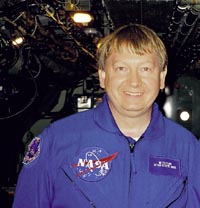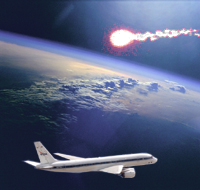
 Dr. Michael J. Taylor,
Dr. Michael J. Taylor,
Utah State University
E-Mail:
Homepage
Brief Biographical Information:
Mike Taylor was born in Winchester, England. He studied at Southampton University, U.K. where he was
awarded a Bachelors degree in Physics (1974), a Masters degree in Electronics (1997), and a Ph.D. in
Atmospheric Physics (1986). From 1986-1990 he was a Senior Research Fellow in the Department of
Physics at Southampton University and in 1991 he took up a research appointment at the Space Dynamics
Laboratory and Physics Department at Utah State University.
Research:
His primary research activities have focussed on the development and utilization of state-of-the-art CCD imaging
instrumentation and digital analysis techniques for remote sensing studies of a range of upper atmospheric
phenomena including mesospheric and thermospheric airglow emissions, acoustic-gravity waves, noctilucent
clouds, equatorial and mid-latitude F region dynamics and faint, high-latitude aurora. More recently he has
utilized these imaging systems to investigate the spectral and spatial signatures of upper atmospheric lightning
phenomena termed "sprites" and "elves". In 1998 he participated in ground-based measurements of the Leonids
meteor shower from USA. He has published over 50 papers in these research areas. Currently he is Principal
Investigator of a US-British Antarctic Survey program to investigate gravity wave climatology over Antarctica
and has just initiated a collaborative program between several US and Japanese universities to investigate gravity
waves and upper atmospheric lightning phenomena (both programs funded by the National Science Foundation).
Research on Leonid MAC:
For the Leonid MAC campaign, Taylor made spectrally filtered measurements of meteors and trains at
visible and near infrared wavelengths to investigate their signatures and dynamics. In addition he utilized the
airborne instrumentation to make a novel imaging study of the longitudinal variability of the OH mesospheric
airglow emission (peak altitude ~87 km) and to study atmospheric wave structure and source distributions.
Results included the first near-IR spectra of meteors and the discovery that tiny bits of meteoric matter are ejected at high speed from the spinning
meteoroids. More information here.
Research on Hyperseed MAC:
For the Hyperseed campaign, Taylor will study the near-IR emissions of the forebody radiation and wake using InGaAs cameras.











 Dr. Michael J. Taylor,
Dr. Michael J. Taylor,